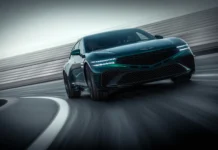
Today, we wave goodbye to one of the oldest and most polarizing vehicles in Ford’s current lineup. The automaker’s move to ax the Flex after 11 years in production isn’t a surprising one, as sales have declined in the wake of new crossover models hitting the market. This occupied the market as a modern-themed throwback to cars like the Country Squire, as wagon-like crossover that was capable of “blending sport/utility vehicle and minivan capability in a low-slung retro inspired package”, at least according to Ford.

Ford originally brought the Flex to life as the Fairlane concept at the 2005 Chicago Auto Show. Back then, it mixed boxy styling with rear-hinged doors and a flat, utilitarian load space like the massive, old-school station wagons. Eventually, under the oversight of former Ford executive design director Peter Horbury, the Flex as we know it came to life. Ford introduced the production Flex in 2009 in six- or seven-passenger configurations.

It wasn’t all nostalgia in the Flex, however. The company also introduced their boxy family hauler, now without its rear-hinged suicide doors, with a 355 horsepower twin-turbocharged EcoBoost V6 on all-wheel drive models. That engine later made its way (with 365 horsepower) across most of Ford’s lineup, including smash hits like the F-150, Explorer and Expedition. Ford did give it a thoughtful facelift in 2013, improving the look of the original design. That wasn’t enough to make it an explosive success, however, although it did attract a modest following among fans.

Those who do actually own a Flex commend the car for being something different. Sure, there are many, many more people who opted for the similarly-priced Explorer. It’s more conventional, doesn’t have an odd name, and sports name recognition the Flex could only dream of. Still, it was roomy, offered all-wheel drive, and managed to seat seven.
Quirky as it may be, we’ll miss the Flex as a standout among the sea of current crossovers. It’s not just a variation on a theme, which may actually endear this car past its expiration date. Its contemporary, the Lincoln MKT, also recently met its end, although its styling hasn’t aged nearly as well.























